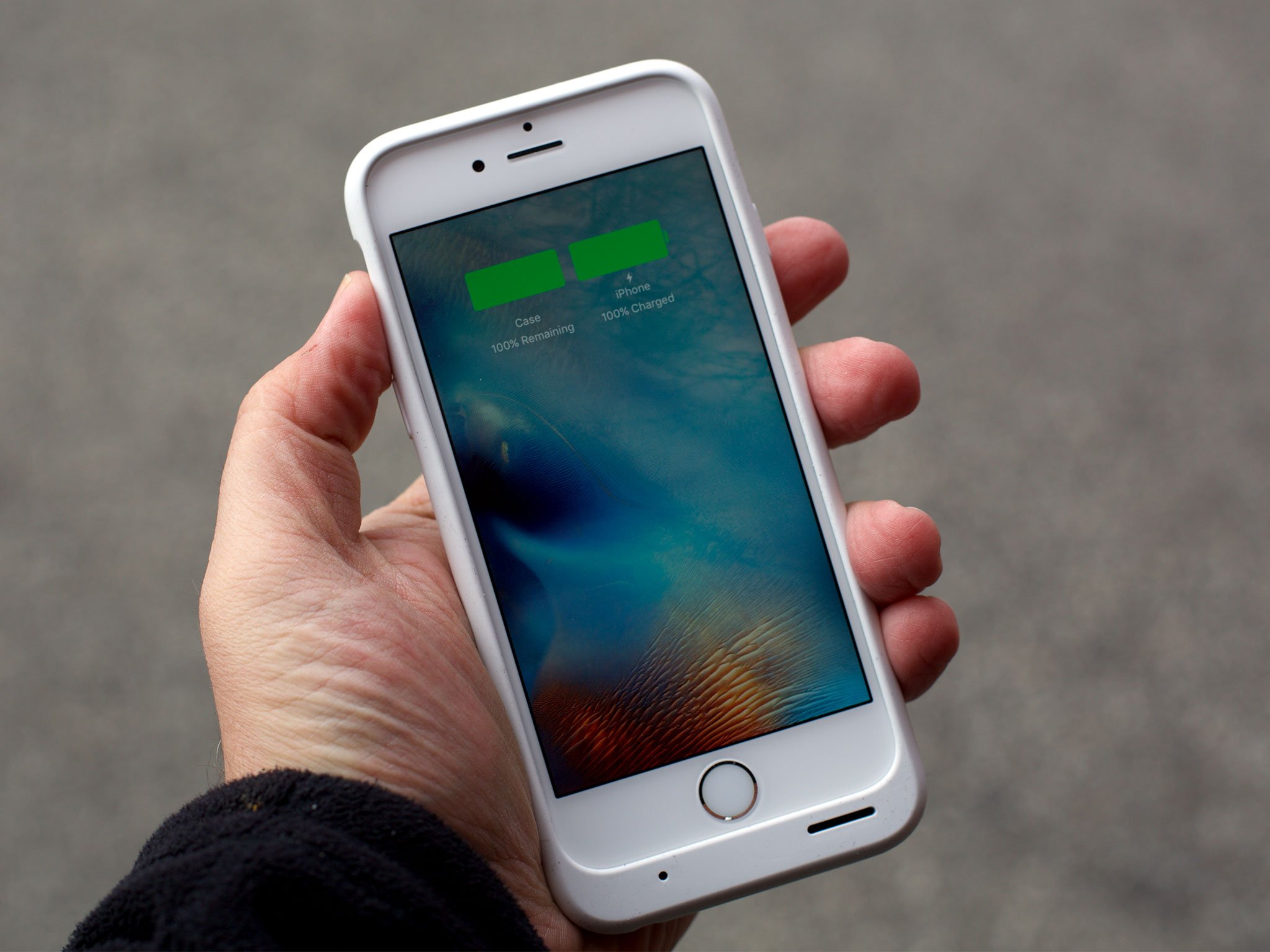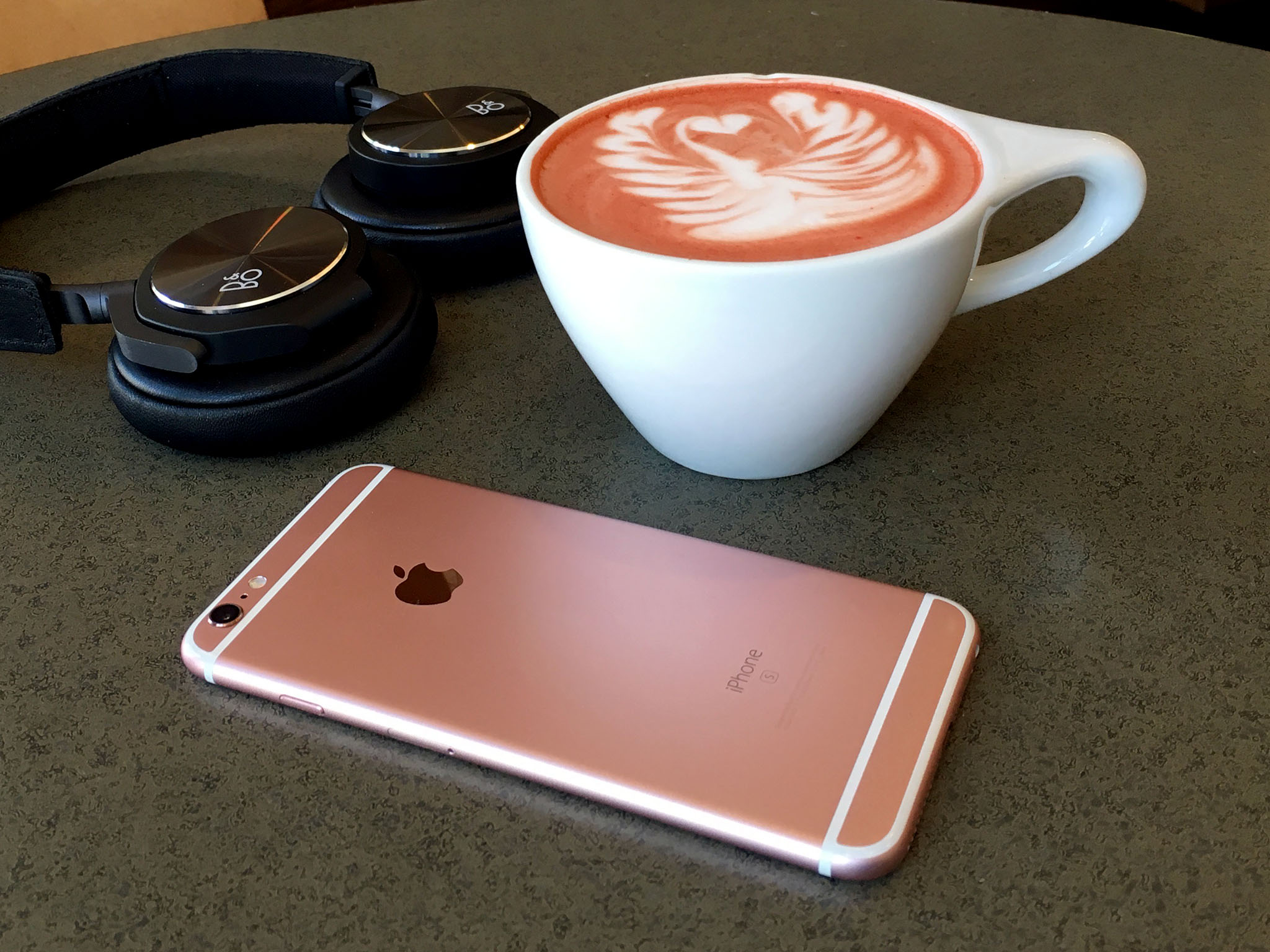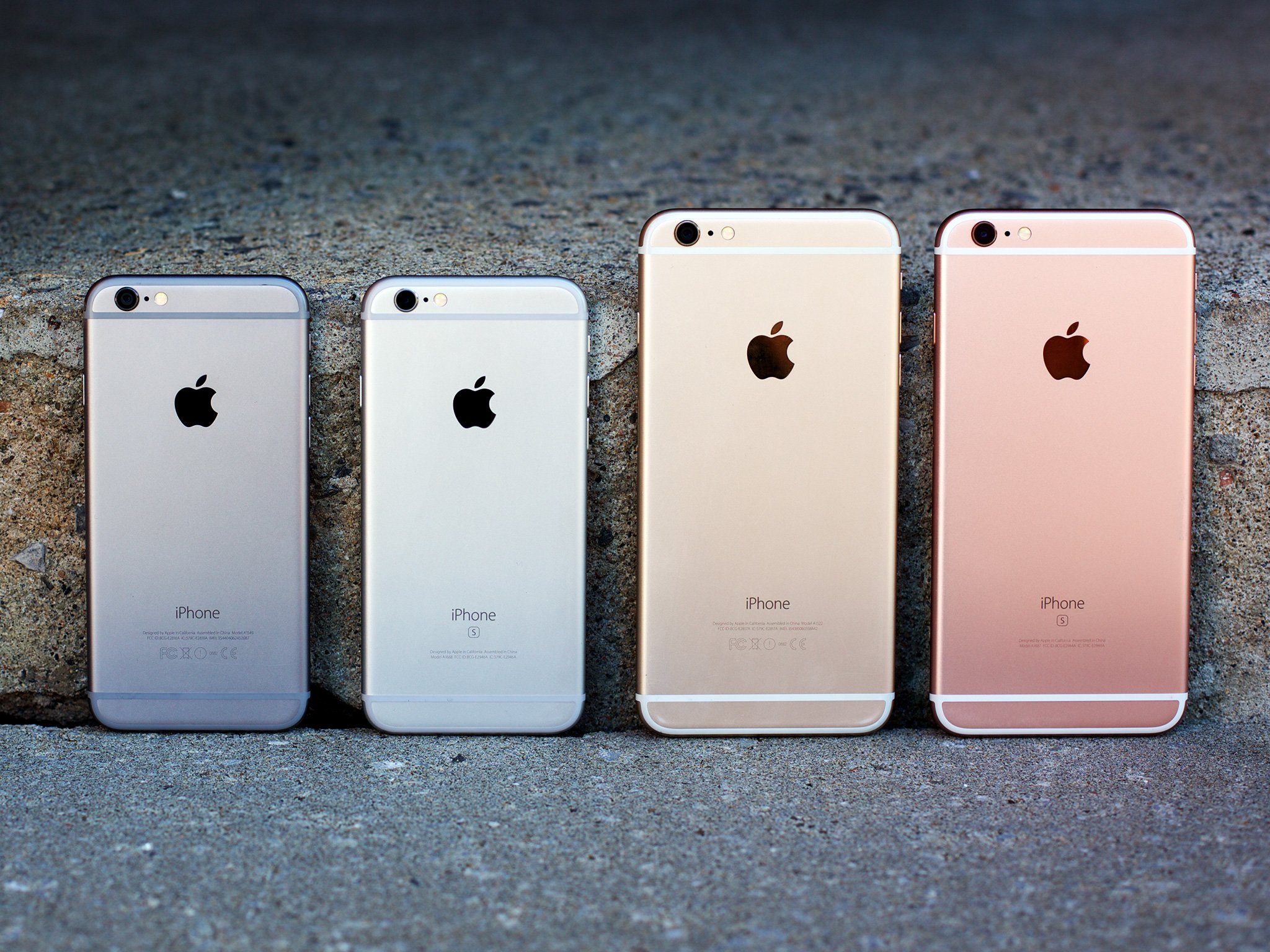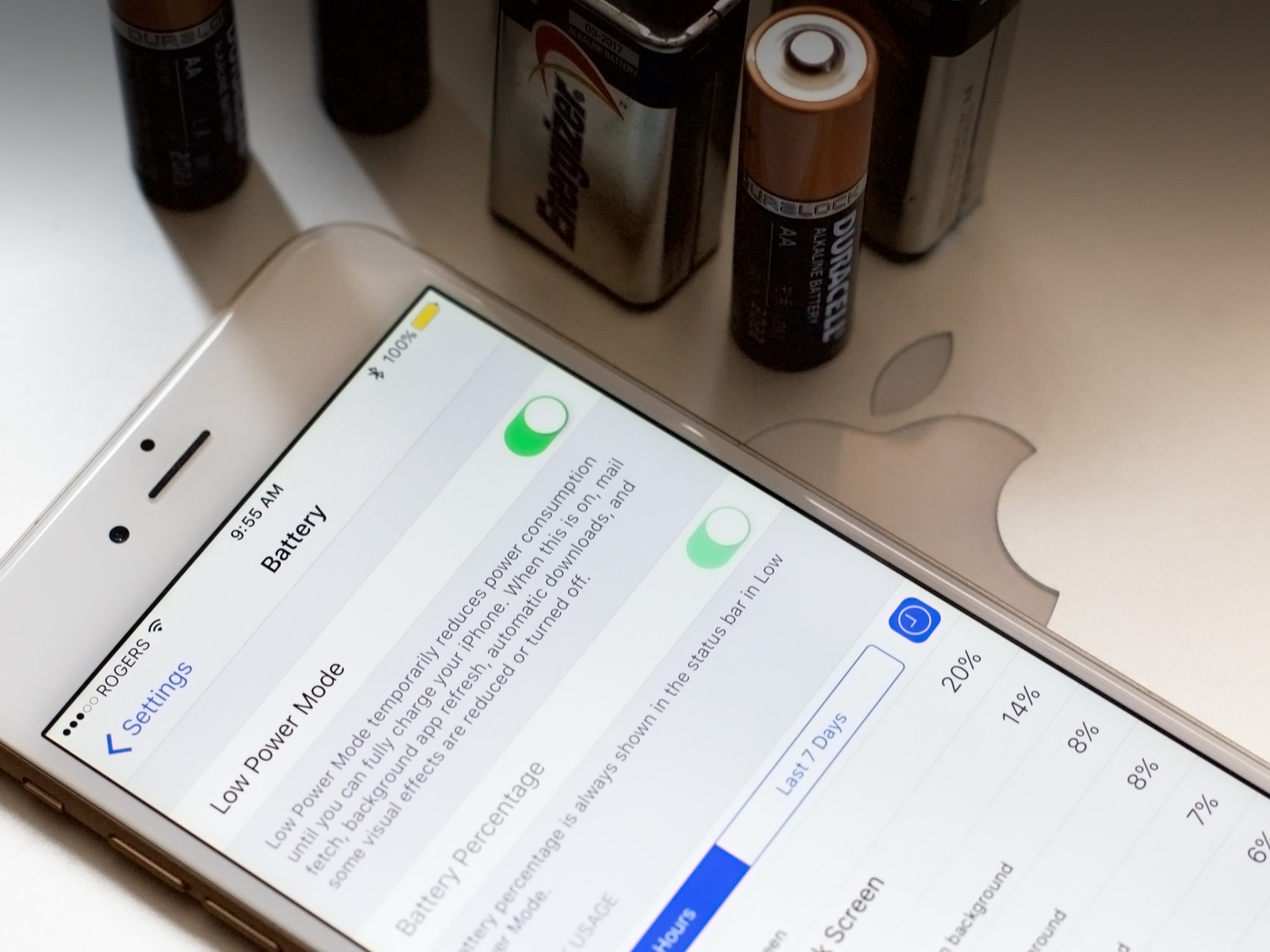Fixing iPhone battery life for the age of Snapchat and Pokemon Go


When it comes to battery life on an iPhone or iPad, Apple has targeted roughly 10 hours of active internet use. It can be a little more if you're on Wi-Fi or have an iPhone Plus, but year after year, no matter how small or thin the devices have become, battery life has stayed fixed to roughly 10 hours of active internet use.
That's a relic of a time now passed, though, when "internet activity" primarily meant checking email and browsing the web. It relied on text being the dominant medium, apps being programmed efficiently, and the processor and radio being allowed to sleep as quickly and often as possible.
Now we have Twitter and Instagram, which load and reload media constantly. Worse, we have Facebook and Snapchat, which create and consume vast amounts of media while constantly tracking location and staying active in the background far longer, and draining batteries much faster, than any reasonable app should allow. Add Slack to the growing list of apps that, like Skype, make calls that can keep audio active in the background — often poorly — and our power supply is really taking a pounding.
And now we have Pokémon Go, which is built around having the screen on all the time, having location services firing all the time, and having the radios going all the time, even when the telemetry and signal aren't great and they have to burn power to stay connected.
Current hyper-popular apps can burn through Apple's roughly 10 hours of battery life in just a few hours. That might make them bad apps, but they're the apps people want to use.
So, how can Apple and the iPhone evolve to handle them?
Bigger batteries

The first thing that jumps to every mind when discussing longer battery life is bigger batteries. "Just double the battery!" is almost as cliché as "Delete the bezels!" these days. It's understandable, because battery chemistry isn't something everyone is familiar with, and there's a supposition that you can just pump more into an iPhone the way you pump filling into a pastry. But, not so much.
Master your iPhone in minutes
iMore offers spot-on advice and guidance from our team of experts, with decades of Apple device experience to lean on. Learn more with iMore!
- Batteries are thermal insulators. Do it wrong and the processor heats up and either wastes power and overheats or has to be ramped down hard to prevent it from overheating and wasting power. Either way, loss comes with the gain.
- Batteries aren't RF transparent. Do it wrong and radios have to amp up to stay connected, which also wastes power. Again, loss with the gain.
- Batteries are heavy. While everyone thinks they want more battery, nobody wants a brick. Keeping a phone, especially a big phone, light enough to be held up for long periods of time and balanced enough to used one-handed when needed, is critical to usability. (Also, people picking up heavy phones in stores tend to put them down and buy lighter phones.)
- Batteries that are too big or dense are illegal to ship in many jurisdictions. That's more an iPad Pro constraint than iPhone constraint, but it's worth pointing out to illustrate the many different concerns battery size raises. A device that can't ship won't be sold.
All that said, the magic of making a modern phone is getting everything to work in harmony, and that can include a bigger battery.
There will always be thermal, RF, weight, and legal issues to address, but getting a battery into an iPhone that can provide 10 hours of Facebook, Snapchat, or Pokémon Go-style internet use has to become the new normal.
Significant shaming

In a perfect world the Facebooks, Snapchats, and Pokemons Go of the world would work with Apple to make sure each and every app respected battery life and did its best to be as power efficient as possible. The reality is, while I'm sure those apps care about power, power doesn't increase downloads or active engagement. Features do. Features that use and abuse power.
It's been years and Facebook still hasn't really fixed its power consumption — it's even had periods where it was made significantly worse due to misuse of background processes. So, the reality is, they're incredibly popular apps, they're not going anywhere, and there're limits to what Apple's cajoling, friendly or otherwise, can accomplish.
But public shaming… that can work miracles.
iOS now has the ability to show which apps are using the most power, and with a tap, you can even see how much of that power is being used in the foreground (while on screen) vs. in the background. Tech nerds know that when background far exceeds foreground, there's a problem. But what about the mainstream?
Power consumption stats has been unofficially called "battery shaming" since launch. Apple even calls them out in a special "Apps using significant energy" dropdown on the Mac. How about something similar on iPhone?
Go to the Battery screen in Settings and, right up front, see the apps that are, right now, using significant energy. Put the egregious ones in red, borderline ones in yellow. And let us swipe to kill them right then and there.
Even more aggressively, have an opt-in for "Notify me when an app is using significant energy" that sends an alert and takes you to the Battery screen in Settings.
That would help encourage everyone, including Apple's own Photos app team, to be as respectful as possible of our power. Because anytime anything goes wrong and our battery life starts to drain, we'll know exactly who to blame.
Power packs
Late last year, Apple released the Smart Battery Case for iPhone 6s. It was tough for a lot of people, reviewers included, to understand. But, thanks to its design and integration, it minimized interference and didn't mimic an outlet, so neither radio power nor background processing ramped up, making it much, much more efficient and effective than sleeker, bigger battery cases.
While it would have benefitted enormously from some stage time and educational material, that ship has sailed. Still, the product itself shows Apple is paying attention to the increased demands of modern mobile lifestyles, and looking at creative ways to extend battery life.
Battery packs used to be for the early adopters. Now they need to be for everyone. Next-generation Smart Battery Cases for both the 4.7- and 5.5-inch iPhones would be terrific, not just for tech journos at trade shows or frequent travelers, but for everyone going out for Pokemon hunt or camping trip, socialing the big game or snapping their way through a day trip.
Whether they work over the Lightning port or we get iPad Pro-style Smart Connectors on iPhones, the ability to have a power doubler available on-demand is compelling. Your phone stays as light and pocketable as possible most of the time, but with the slip of some casing or click of some magnets, it becomes a battery beast.
Bottom line
What makes for 10-hours of battery life while using the internet is different today than it was just a few years ago. People are spending vastly more time in battery-hungry apps like Facebook, Snapchat, Maps, Photos, and Pokemon Go than ever before, which means they're running out of power faster than every before.
Apple can solve for this with bigger batteries, more severe software shaming, and power packs made for the mainstream. Or better yet, by doing all three.

Rene Ritchie is one of the most respected Apple analysts in the business, reaching a combined audience of over 40 million readers a month. His YouTube channel, Vector, has over 90 thousand subscribers and 14 million views and his podcasts, including Debug, have been downloaded over 20 million times. He also regularly co-hosts MacBreak Weekly for the TWiT network and co-hosted CES Live! and Talk Mobile. Based in Montreal, Rene is a former director of product marketing, web developer, and graphic designer. He's authored several books and appeared on numerous television and radio segments to discuss Apple and the technology industry. When not working, he likes to cook, grapple, and spend time with his friends and family.

